Suunto Smart HR Belt - Beware module orientation - HRV and ZoneSense
-
Ever since I bought the “Suunto Smart Heart Rate Belt” I have been extremely diligent in keeping the module oriented correctly, following the manual instructions:
“Suunto Smart Heart Rate Belt User Guide”:
“Putting on belt
[…]
4. Put the belt on so that it fits tightly and the Suunto logo is facing up.”This has worked well, with little problems regarding both Puls and Heart Rate Variability. A typical HRV curve looks like the Runalyze graph below, which only has 0,8 % Anomalies. And that is what Suunto ZoneSense really craves; reliable data:

Today I returned home after a short Run session and realised that I had snapped the HR module on upside down. Well, I thought, it shouldn’t make much of a difference since (to my knowledge) there are no other sensors present - like gyroscopes or accelerometers. But when looking at the ZoneSense graph I really stood corrected! This is not a normal result in my case:

And although Runalyze claim that the session only had 0,7 % Anomalies, the graph looks rather suspect:
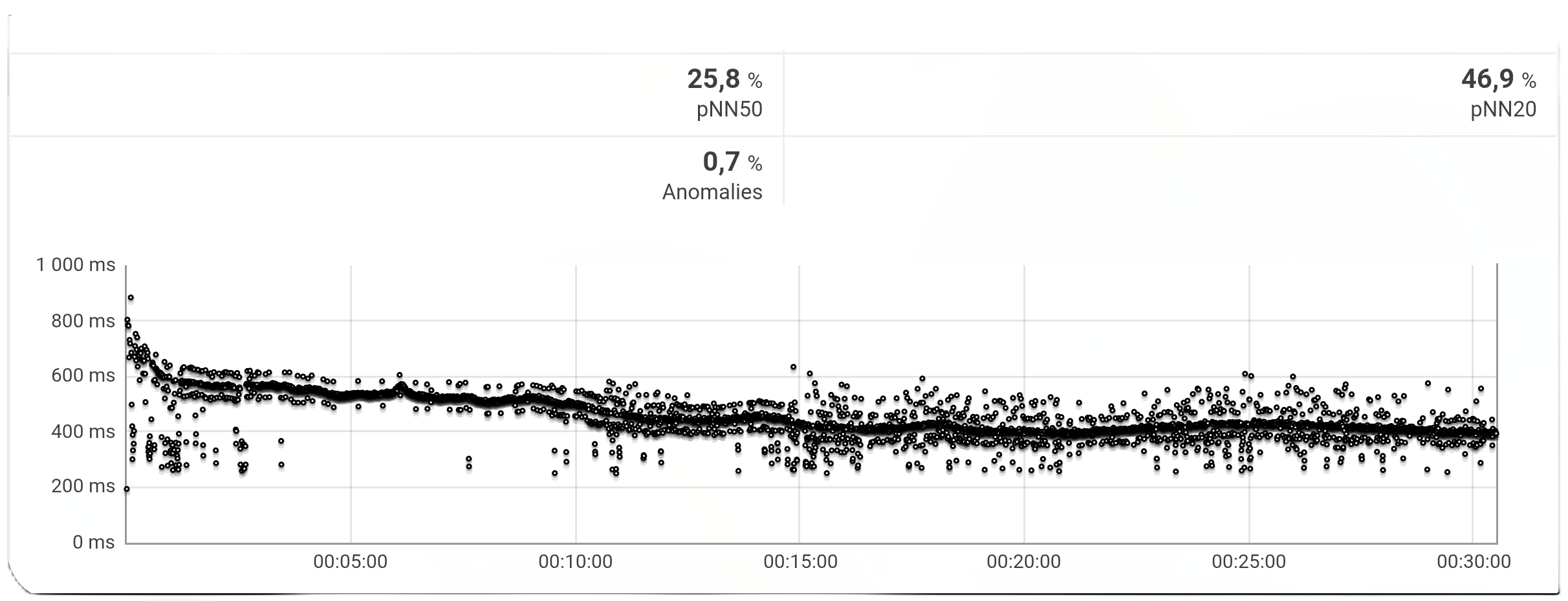
Using the ‘fill screen’ button to zoom in on the graph, we see even clearer that the main line is surrounded, above and below, by two fuzzy ‘ripple’ or ‘echo’ areas:

So, not only are we in danger of getting bad HRV data through the usual channels like dry belts, poor belt contacts, static electricity, worn-out belts asf, with the Suunto belt, module orientation is imperative. This surprised me to such a degree that I felt compelled to write this forum post.
-
@Inge-Nallsson said in Suunto Smart HR Belt - Beware module orientation - HRV and ZoneSense:
(to my knowledge) there are no other sensors present - like gyroscopes or accelerometers
not sure this is true, by searching on the Movesense web site it seems that all their devices have also movement sensors (3 axes):
https://www.movesense.com/movesense-sportconcerning the HR/HRV only measurements I also expect that flipping the module shouldn’t affect the measurements …
-
@Stefano-M64 Thank you for the Movesense link. Now I know that they normally are packed with sensors! And the company provide datasheets by e-mail if you give them a lot of information in return…
The flipping result is indeed surprising. The example of a normal HRV graph I posted was from Saturday, chosen because of the Run session length being closer to today’s than the session length yesterday which I’ll provide as an OK evidence below. 0.0% Anomalies according to Runalyze:
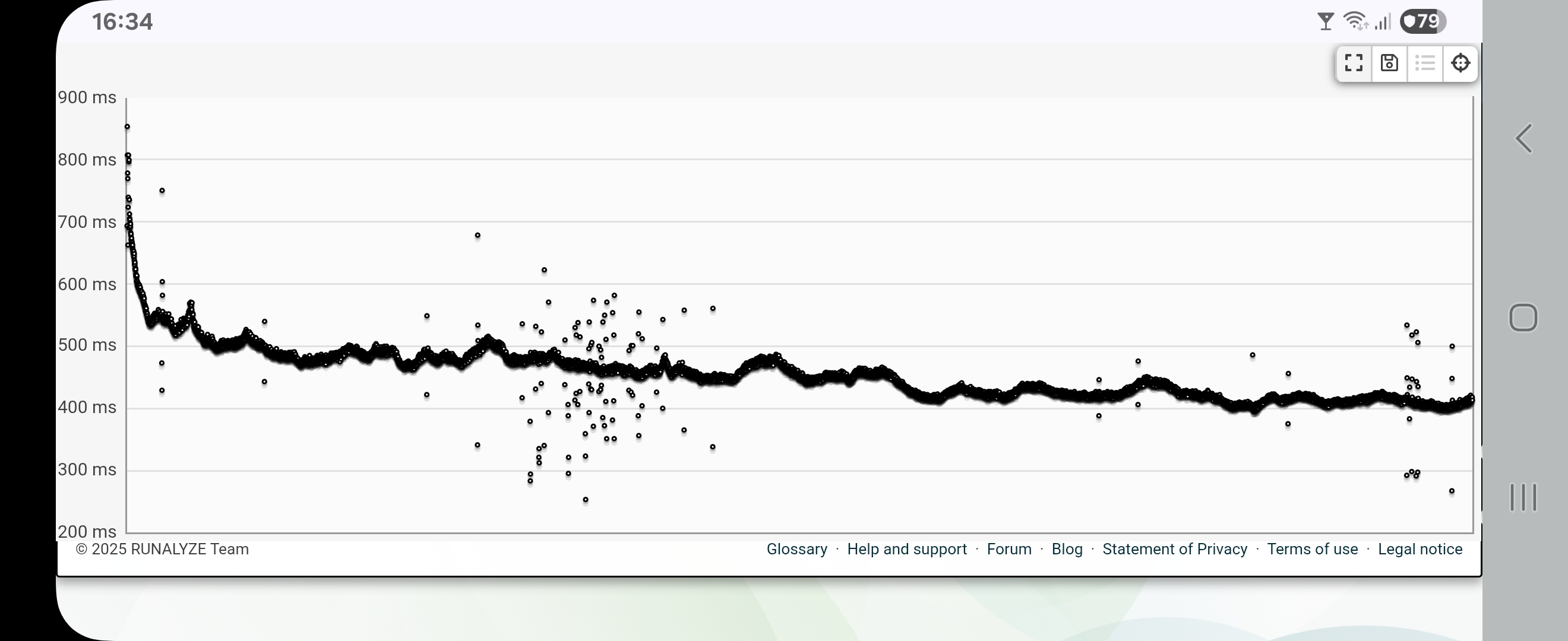
There are some scattered readings but nothing that affected ZoneSense:
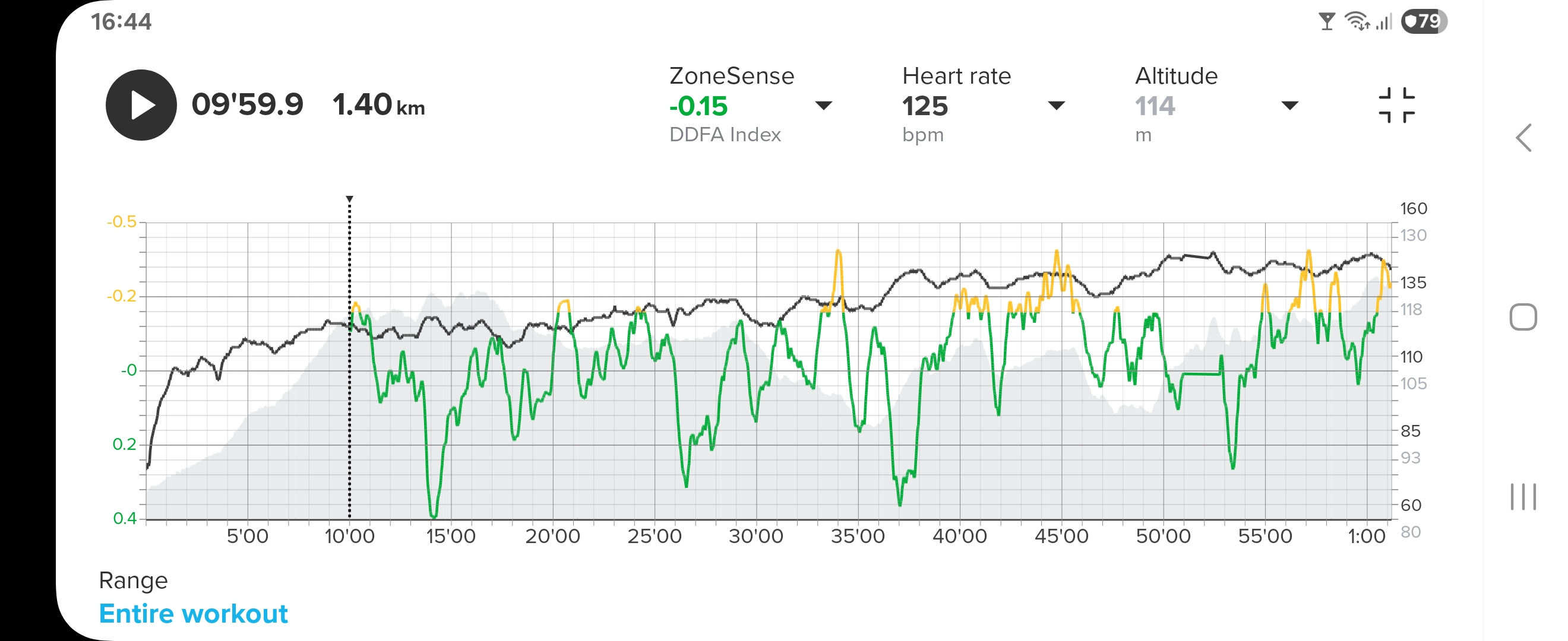
There is very little chance that the HR belt got worn-out from yesterday to today, but if I get bad HRV data with a correctly positioned module tomorrow I’ll be sure to edit the first post with a strikeout of all incorrect text

-
@Inge-Nallsson I got this scattered reading when my heart is skipping. I have an implanted ECG monitor and have been diagnosed with ventricular extrasystole, along with occasional short pauses in my pulse. When I feel my heart skipping during running or cycling, and then later look at the R-R interval chart or successive differences chart, I can clearly see the symptoms at the exact moments I felt them. Many people have this condition and don’t feel anything. I’m “lucky” enough to feel every single extrasystole
 — and sometimes it’s very annoying. It shouldn´t be dangerous if there are no other symptoms. But sometimes I got this reading even with no symptoms, when I feel good and that must be anomalies.
— and sometimes it’s very annoying. It shouldn´t be dangerous if there are no other symptoms. But sometimes I got this reading even with no symptoms, when I feel good and that must be anomalies.This is run with my problems, 0.1% anomalies, successive differneces:

And another one without that feelings, 0% anomalies:

Cycling with very strong heart skipping at start (long uphill), exhausted from previous ride and work on cottage, 0% anomalies:

-
@Jan-Suchánek wow, those are very good readings, are you using Suunto HR belt?
-
@Likarnik No, sorry. I realized, that my answer is off topic, because I use Polar H10 strap. Always make it wet with ultrasound gel and moved about 5cm to the left breast. This makes the highest voltage reading to me. Tried with FatMaxxer app.
-
@Jan-Suchánek great for offtopic as I also use h10

-
@Jan-Suchánek said in Suunto Smart HR Belt - Beware module orientation - HRV and ZoneSense:
But sometimes I got this reading even with no symptoms, when I feel good and that must be anomalies.
Yes… and to try to keep my reply on topic
 after additional flipping experiments with the Suunto HR belt I’m now even more inclined to file spurious HRV readings under the anomalies heading -caused by any number of reasons - including friction, vibrations, module software and related bugs!
after additional flipping experiments with the Suunto HR belt I’m now even more inclined to file spurious HRV readings under the anomalies heading -caused by any number of reasons - including friction, vibrations, module software and related bugs!Sure, I’ve got the benign condition AV-block I (slight delay between ‘signal and contraction’; to simplify things) but a computerised ECG machine is needed to detect it - or a printout on millimetre grid paper, a ruler and specialized knowledge. [Block II would mean missed beats and Block III cause for a pacemaker].
Once, now in my old age, I’ve experienced an alarming heart episode. About every 10 seconds (at the beginning) my heart did a double beat - concluded afterwards. I could feel it as a sort of missed beats and like a burp got born in the chest for every instance, but never was delivered. However, this came accompanied by a feeling of fatigue and nausea. I had to go to bed and phone a friend that ‘unfortunately I was unable to show up for the planned swimming session’… Had I been running at the time the pulse graph probably would have shown some strange readings - possibly even amongst the HRV data.
But overall I think we should disregard spurious HRV. As they say: ‘When you hear a horse, don’t think zebra!’.
-
Since I have somewhat of a scientist’s ethos and realised that the Suunto HR belt with module could be used in four different combinations, I felt that I also had to provide data for all of them, to prove or disprove the warning in this topic’s heading; “Beware module orientation”.
The belt itself can be worn ‘correctly’ with the closing hook and loop on the left side of the torso (hook going down through the loop), or upside down on the right side of the torso with the hook going up through the loop. On my belt there are no markings at the electrode ‘snap-in holes’ other than the in-between text “MOVESENSE”.
The ‘correct’ belt position still feels awkward to me after half a year of usage since I’ve had so many years with both Garmin and Polar belts, which both close on the right side of the torso…
On this belt then, the module can be snapped in correctly, with the SUUNTO logo pointing upwards (red triangle above text) aligning with the reading of the MOVESENSE text orientation, or be flipped into an incorrect position upside down. The module has markings of L and R at the electrodes but, as said, nothing corresponding on my belt.
Calling ‘correct’ position Up and incorrect Down I have logged the following results:
BeltUp-ModuleUp
(Pulse OK, HRV OK)BeltUp-ModuleDown
(Pulse OK, HRV Not-OK)BeltDown-ModuleUp
(Pulse OK, HRV OK)BeltDown-ModuleDown
(Pulse Not-OK, HRV Not-OK)In my opening postings of this subject I included screenshots from the first two combinations. Looking at the third and fourth results, where one had OK pulse while the other had massive misreadings might be a fluke with either one, OR the last combination really do exacerbate the position problem. No way to know without doing a large number of experiment sessions.
I’ll skip screenshots from the BeltDown-ModuleUp (Pulse OK, HRV OK) session Wed 30/7 since it was so clean in both areas. I’m using the OHR of a Garmin FR955 with the old Firmware 19.18 as control - normal result is +1 to +2 bpm against both a Polar H10 and the Suunto belt at all kinds of running efforts (my skin/wrist really agrees with OHR, also on the Race S).
Instead I will end this posting with data from yesterday Fri 1/8 BeltDown-ModuleDown (Pulse Not-OK, HRV Not-OK) and a closing BeltUp-ModuleUp (Pulse OK, HRV OK) from today Sat 2/8 to really underscore that my belt is A-OK in a correct position. Not worn out, and locked to a constant length by a safety pin at the adjustment point.
Fri 1/8 BeltDown-ModuleDown (Pulse Not-OK, HRV Not-OK):
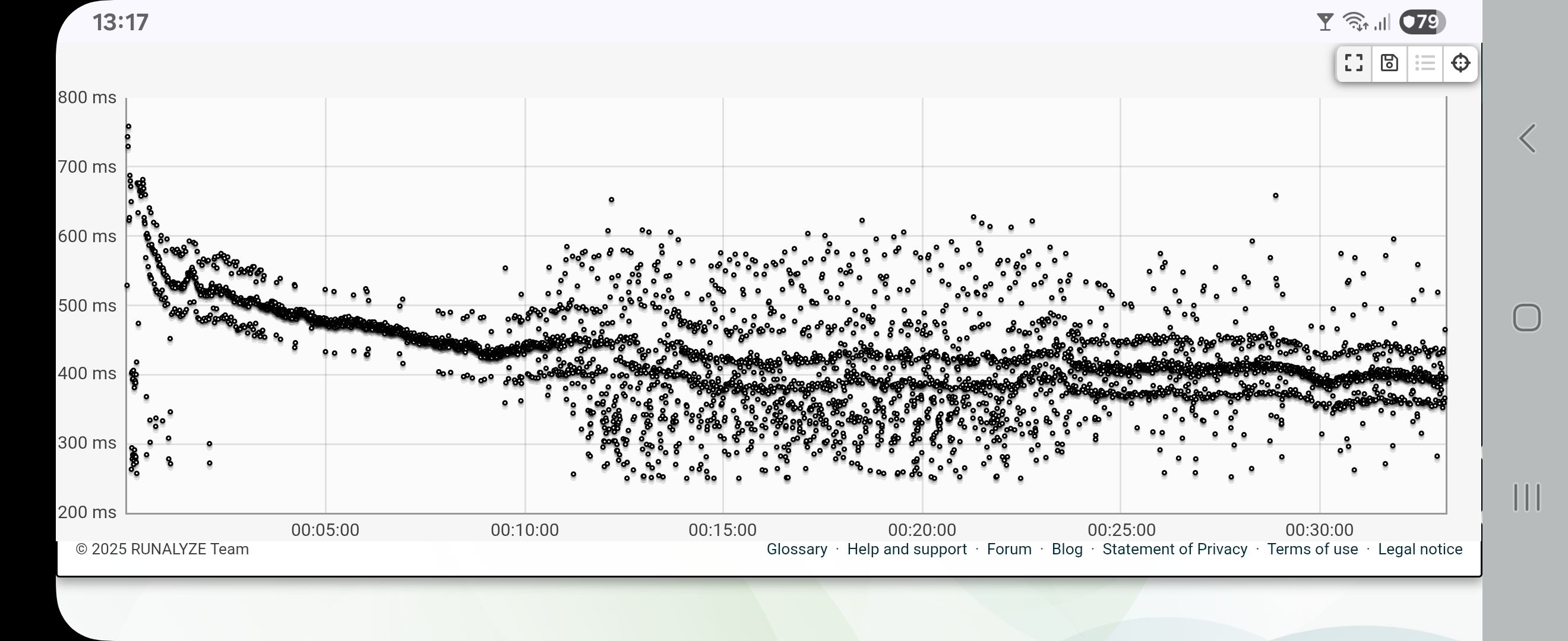
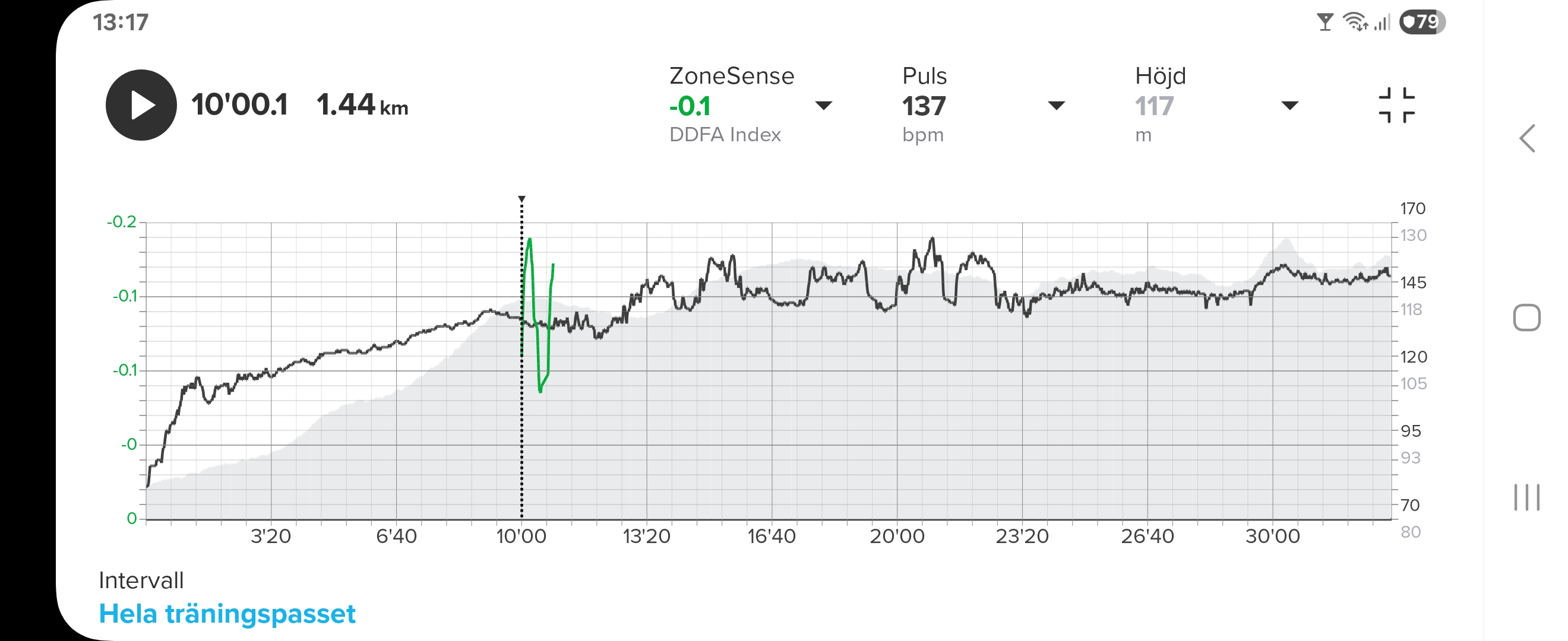
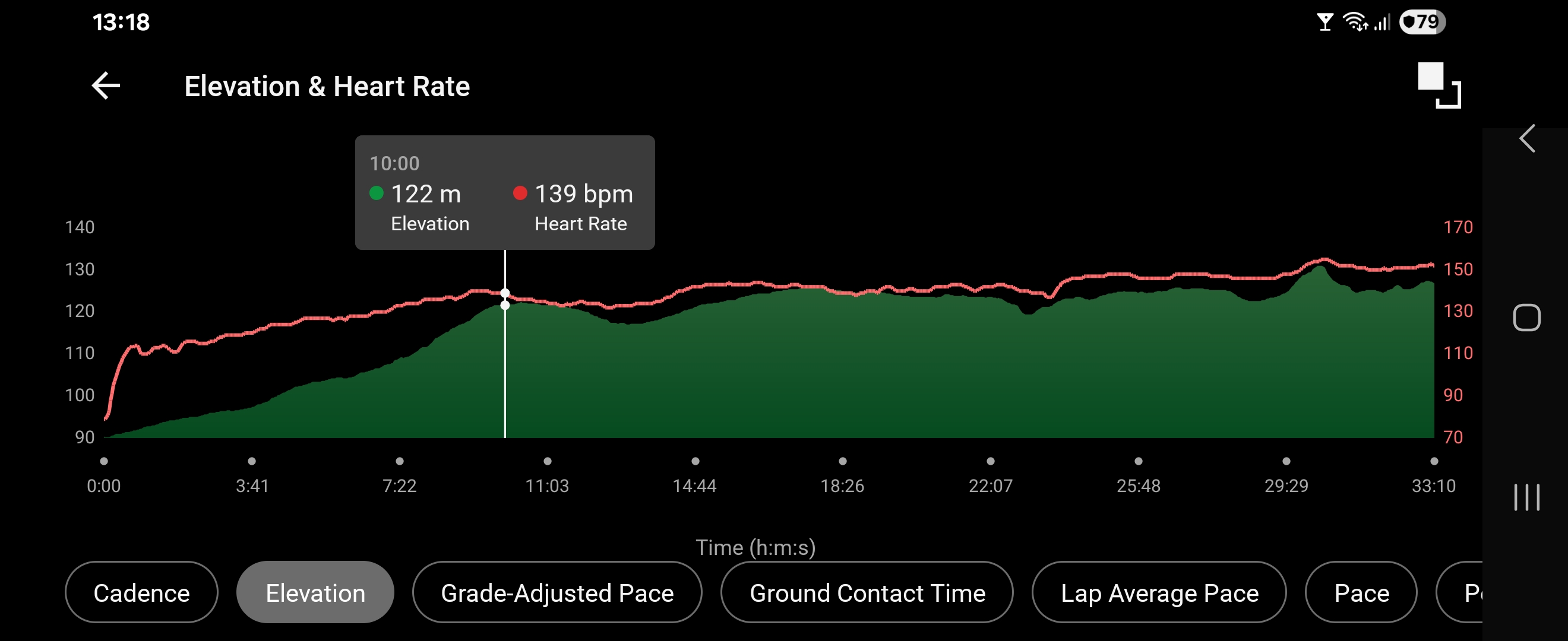
Sat 2/8 BeltUp-ModuleUp (Pulse OK, HRV OK):
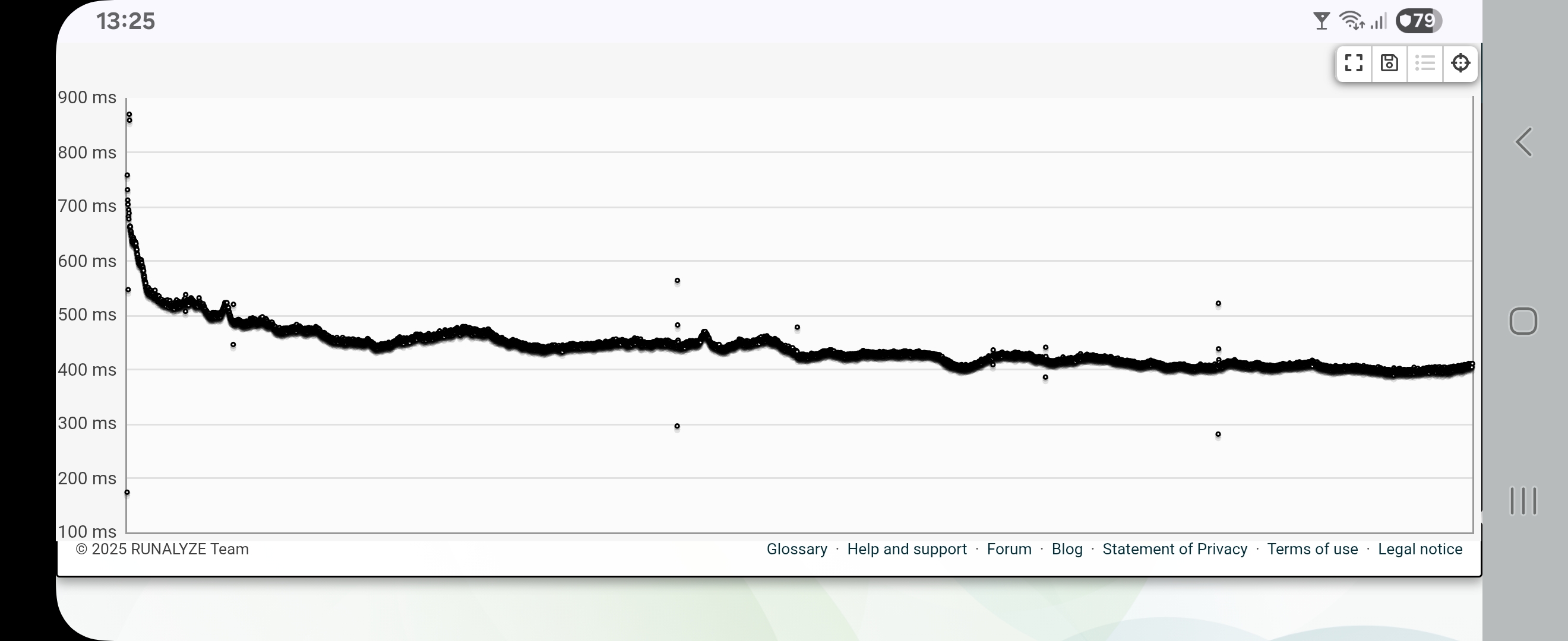
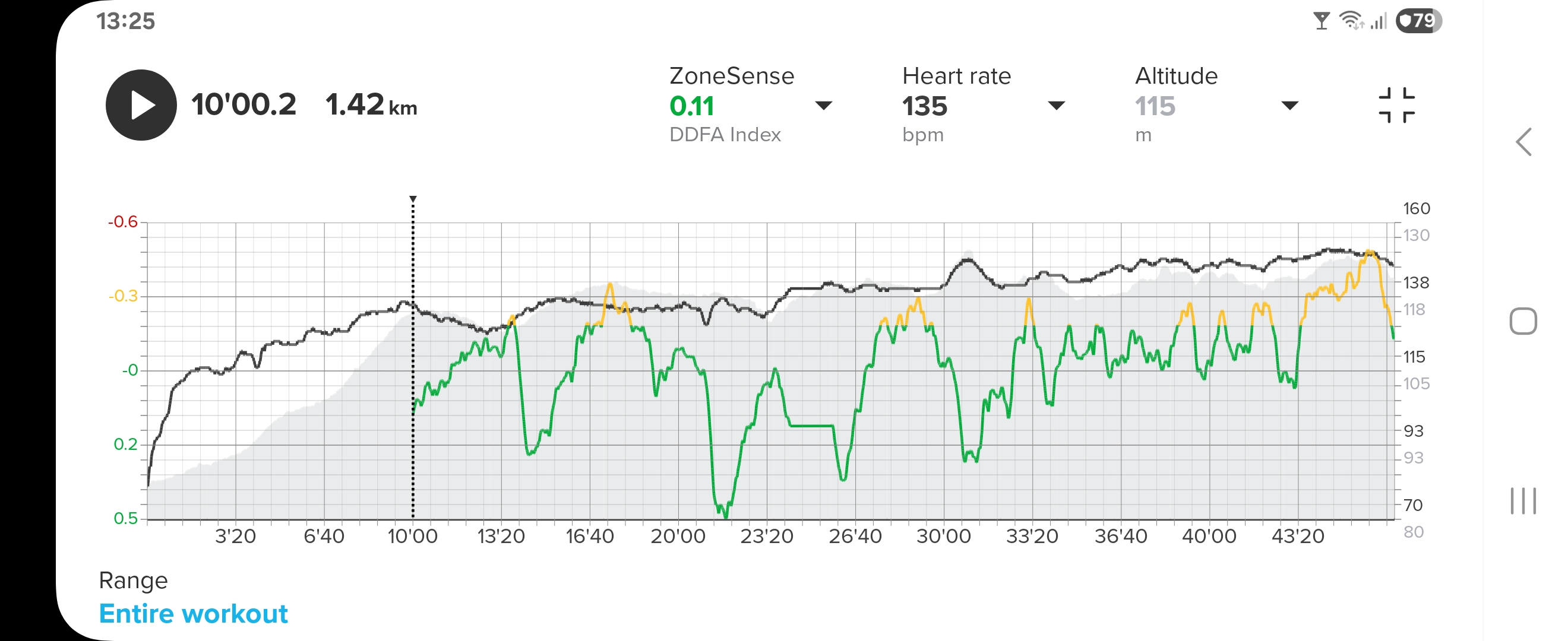
The only conclusion I can draw is that some sensor inside the module interferes with the HRV and possibly HR data when not in an imagined ‘correct’ position. This then would most probably be a software problem. But since I am not offered any method to upload a new SW version, it might as well be called a hardware defect.